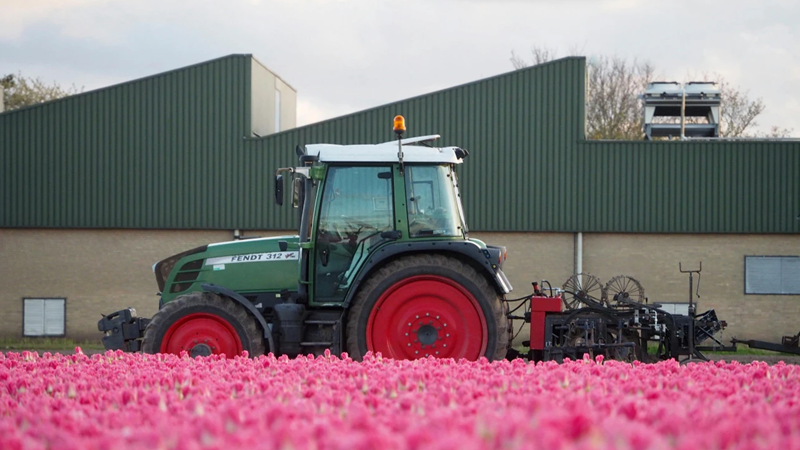
Sarah-Manon Blok
From Green to Grey: How Dutch Agriculture is Destroying Biodiversity
Most Read Stories Today
-
Water Scarcity and Artificial Rainfall: The Positive and The Negative Effects of Cloud Seeding, including Health Hazards and Climate Implications.
-
Renewable Energy in Rural Areas: Challenges, Opportunities, and Successful Rural Projects
-
Pakistan's Agriculture at Risk Due to Climate Variability
-
South Africa's Recent Floods: Is Climate Change to Blame?
-
South Korea's floods: root causes and prevention strategies.
-
South Africa: Cape Town, A City Under Fire
-
The Human Cost of Climate Disasters
-
Our Oceans, Our Future: The South African Dilemma of Overfishing
-
Degenerative Impact of Hydrocarbons On The Environment.
-
Sustainable Urban Planning - Copenhagen and the Path to Climate Resilience
When you think of the Netherlands, what comes to mind? Scenic windmills, endless tulip fields, and rich Gouda cheese? While these symbols represent the Netherlands’ identity, they also highlight a growing crisis.
The Netherlands is one of the world’s largest agricultural exporters, with nearly two-thirds of its land devoted to farming. It is also home to 18 million people with over 100 million chicks, 12 million pigs, and 4 million cows, most confined to industrial sheds. Keeping this massive livestock's industries running requires vast amounts of resources, with 72% of Dutch farmland used to grow animal feed. Nearly half of the country’s total land area is consumed by livestock farming.
Vanishing Habitats And The Rise Of Monocultures
This once-diverse farmland has been overtaken by endless fields of wheat, corn, and potatoes, driven by a practice called monocropping. Monocropping is the practice of growing a single crop year after year on the same land, which comes with a steep price of depleting the soil, increasing chemical dependence, and reducing plant and animal diversity, with fewer natural predators, pests multiply, leading to even more pesticide use, creating a harmful cycle that damages both ecosystems and human health.
These uniform fields leave little space for birds, butterflies and small mammals. Forests are cleared for feed crops, wetlands are drained, and natural ecosystems are vanishing at an alarming rate. Wetlands are among the most productive ecosystems in the world compared to rain forests and coral reefs. They are disappearing along with their crucial role in water filtration and carbon storage. The European hedgehog, which relies on hedgerows and grasslands, is just one of many species struggling to survive in an increasingly barren landscape.
Pollinators in Peril
One of the most alarming effects of monoculture farming is the sharp decline in pollinators. Bees, butterflies, and other insects that are crucial for pollinating crops and wild plants are rapidly dying off due to pesticide used and habitat loss. To highlight the urgency, the Netherlands is home to 360 bee species, but over half are now endangered. This threatens not just agriculture but entire ecosystems. Without pollinators, plants struggles to reproduce, setting off a chain reaction that affects birds, bats, and other species that rely on insects for food.
A Path Forward
Agriculture has shaped the Dutch economy, but at a huge cost to the environment. Monocropping, factory farming, and wetland destruction have pushed biodiversity to the brink of vanishing. If this continues, many species will disappear forever.
The Netherlands must act now by Embracing sustainable farming, restoring habitats, and most importantly scaling down industrial livestock farming are key to reversing biodiversity loss. Reducing the number of factory farms would free up land for nature, and save billions of animals each year. With less demand for animal feed ecosystems would have a chance to recover. The choice is clear; allow agriculture to strip the land further of life, or take action now to restore the country’s rich and diverse ecosystems.
Sources used:
- https://www.worldometers.info/world-population/netherlands-population/
- https://longreads.cbs.nl/the-netherlands-in-numbers-2021/how-many-farm-animals-are-there-in-the-netherlands/
- https://www.mareonline.nl/en/science/reimagining-dutch-agriculture-what-if-we-all-go-vegan/
- https://nieuwscheckers.nl/vee-industrie-neemt-bijna-helft-nederlandse-grond-in-beslag-en-misschien-zelfs-meer/
- https://www.cbs.nl/en-gb/figures/detail/7100eng
- https://www.sciencedirect.com/topics/agricultural-and-biological-sciences/monocropping
- https://www.researchgate.net/publication/376521787_Effect_of_Mono_Cropping_on_Soil_Health_and_Fertility_Management_for_Sustainable_Agriculture_Practices_A
- https://www.epa.gov/wetlands/why-are-wetlands-important
- https://www.eurekalert.org/news-releases/1063174
- https://frontiergroup.org/articles/why-monoculture-farming-practices-harm-bees/
- https://promotepollinators.org/project/the-netherlands/
Edited by: Muhammad Abdullahi Ibrahim

Terms & Conditions
Subscribe
Report
My comments